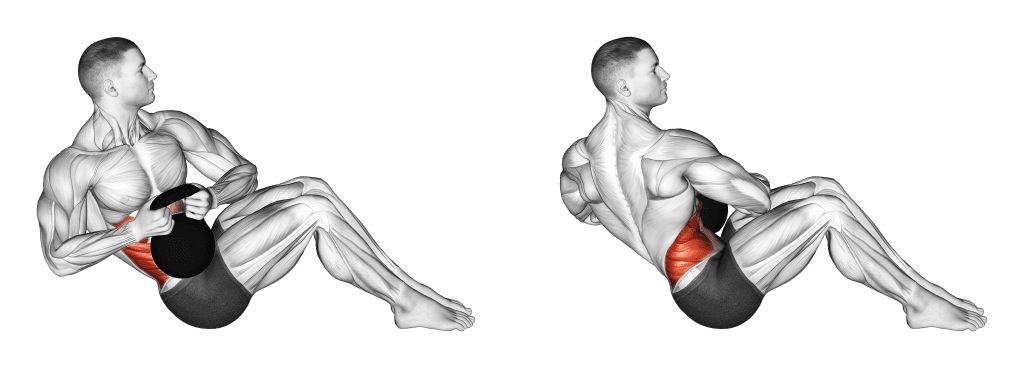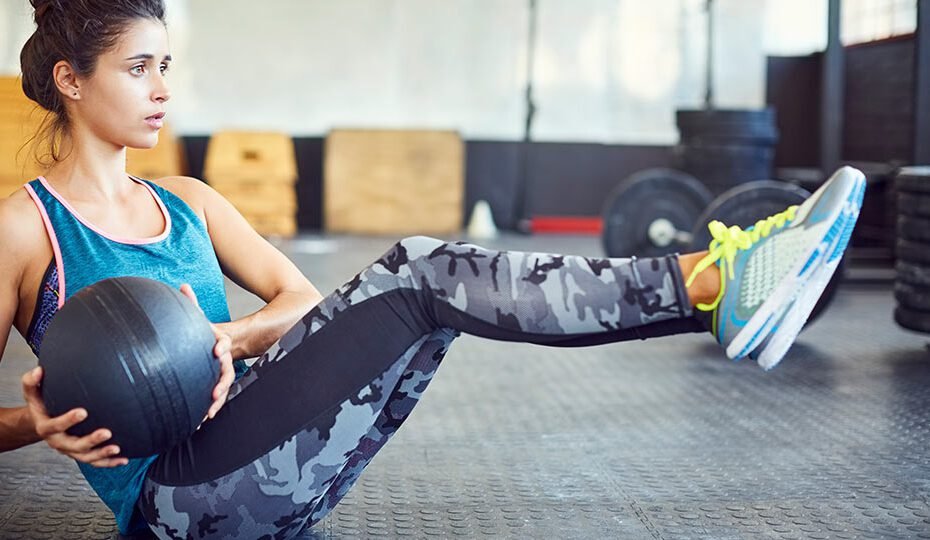Russian twists are a versatile core exercise that targets your oblique muscles and enhances rotational power and stability. This guide delves into the intricacies of Russian twists, providing step-by-step instructions, insights into the muscles engaged, benefits, variations, alternatives, common mistakes, and essential considerations to help you master this effective movement.
Muscles Worked:
Primary Muscles:
- Obliques (Side Abs)
Secondary Muscles:
- Rectus Abdominis (Front Abs)
- Transverse Abdominis (Deep Core)
How to Perform Russian Twists:

- Setup: Sit on the floor with your knees bent and your feet flat. Lean back slightly, engaging your core.
- Lift: Lift your feet off the ground, balancing on your sit bones while maintaining a straight spine.
- Rotation: Hold a weight or medicine ball with both hands at chest level. Rotate your torso to one side.
- Twist: Exhale as you twist your torso and the weight to the opposite side, engaging your obliques.
- Return: Inhale as you return to the center, maintaining control of the weight.
- Repetition: Complete the desired reps, alternating twists from side to side.
Benefits of Russian Twists:
- Oblique Engagement: Targets the oblique muscles for a defined and toned waistline.
- Rotational Power: Enhances rotational strength and stability for improved sports performance.
- Core Endurance: Develops core endurance through controlled and repetitive twists.
- Balance and Coordination: Challenges balance and coordination due to the seated and rotational nature.
Variations:
1. Weighted Russian Twists:
- Hold a dumbbell, medicine ball, or weight plate to add resistance and intensity.
2. Russian Twists with Leg Raise:
- Combine the movement with leg raises for an extra challenge and full-body engagement.
Alternatives:
1. Seated Bicycle Crunches:
- Perform a similar twisting motion while incorporating a bicycle pedaling motion with your legs.
2. Standing Cable Twists:
- Utilize a cable machine with a rope attachment to perform standing oblique twists.
Common Mistakes to Avoid:
- Rounding the Back: Maintain a straight and upright spine throughout the movement.
- Using Momentum: Twist with controlled movement, avoiding jerky or swinging motions.
- Limited Twist: Rotate your torso fully to engage your obliques effectively.
Key Considerations:
- Breathing: Exhale as you twist and contract your obliques, inhale as you return to the center.
- Weight Selection: Choose a weight that challenges you while allowing you to maintain proper form.
- Form Focus: Prioritize maintaining proper form over increasing speed or reps.
Conclusion:
Russian twists provide a targeted approach to developing oblique strength and rotational power. By mastering their execution, understanding the muscles engaged, appreciating the benefits, exploring variations and alternatives, avoiding common mistakes, and considering key factors, you can seamlessly integrate Russian twists into your fitness routine. Approach this exercise with dedication, proper form, and a commitment to achieving a balanced and strong core for optimal results.
